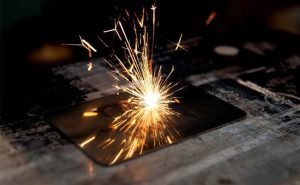If you are looking to create intricate designs on metal surfaces, then metal etching may be the perfect solution for you. Metal etching is a process that involves using chemicals to remove unwanted material from metal surfaces and create intricate designs. This process is also known as photo etching or photo chemical etching.
Metal etching is a versatile process that can be used on a variety of metals, including copper, brass, stainless steel, and aluminum. It is commonly used in industries such as aerospace, automotive, and electronics for creating precision parts and components. Metal etching is also used in jewelry making and art to create intricate designs on metal surfaces.
The process of metal etching involves applying a photoresist material to the metal surface, exposing it to UV light through a mask that has the desired design, and then developing the exposed photoresist to create a stencil. The stencil is then used to selectively remove the metal from the surface using a chemical etchant. The remaining photoresist is removed to reveal the final design. Metal etching is a precise and accurate process that can create intricate designs with high levels of detail.

Metal etching is a process that uses chemicals to create intricate designs and patterns on metal surfaces. It is a versatile technique that can be used to create a wide range of products, from jewelry to industrial parts. In this section, you will learn about the fundamentals of metal etching, including the materials and tools needed, as well as the safety precautions that should be taken.
To get started with metal etching, you will need a few basic materials and tools. These include:
When working with chemicals, it is important to take proper safety precautions to protect yourself and others. Here are some safety tips to keep in mind when etching metal:
By following these fundamentals of metal etching, you can create beautiful and intricate designs on metal surfaces while staying safe and minimizing the risk of accidents.
When it comes to metal etching, there are several techniques that you can use to achieve your desired result. Here are some of the most common etching techniques that you can use:
Chemical etching is a popular technique that involves using chemicals to etch a metal surface. The process involves applying an acid or a chemical solution to the surface of the metal, which removes the unwanted material to create a design or pattern. The acid or chemical solution is usually applied using a mask or stencil to control the areas that are etched. Chemical etching is a versatile technique that can be used on a variety of metals, including copper, brass, and stainless steel.
Electro-etching is another popular technique that involves using an electrical current to etch a metal surface. The process involves placing the metal in an electrolyte solution and applying a voltage to it. The voltage causes the metal to dissolve in the solution, creating a design or pattern. Electro-etching is a precise technique that can produce intricate designs and patterns. It is commonly used in the production of printed circuit boards and metal jewelry.
Photo-etching is a technique that involves using a photoresist to etch a metal surface. The process involves coating the metal with a light-sensitive photoresist and then exposing it to light through a photographic negative. The areas of the metal that are exposed to light become hardened, while the areas that are not exposed remain soft. The soft areas are then removed using an etchant, leaving behind a design or pattern. Photo-etching is a precise technique that can produce intricate designs and patterns. It is commonly used in the production of precision parts and components.
There are several etching techniques that you can use to achieve your desired result. Each technique has its own advantages and disadvantages, so it is important to choose the right technique for your project. By understanding the different etching techniques available, you can create beautiful and intricate designs on a variety of metals.
Metal etching is a process of removing material from a metal surface to create a desired design or pattern. Before you begin the etching process, you need to prepare your artwork and transfer it onto the metal surface.
The first step in designing your metal etching is to create your artwork. You can draw your design by hand or use computer software to create a digital design. Keep in mind that your design will be etched into the metal, so it should be simple and easy to transfer.
Once you have your design, you need to print it out onto a transfer medium. You can use transfer paper, acetate sheets, or even vinyl. The transfer medium should be able to withstand the etching process and transfer the design onto the metal surface.
There are several methods you can use to transfer your design onto the metal surface. The most common methods include:
Choose the transfer method that works best for your design and the materials you are working with. With the right preparation and transfer method, you can create beautiful and intricate metal etchings that are sure to impress.